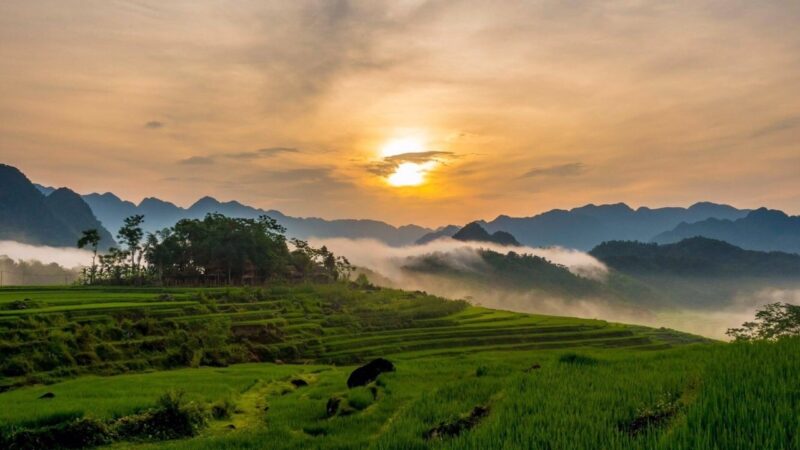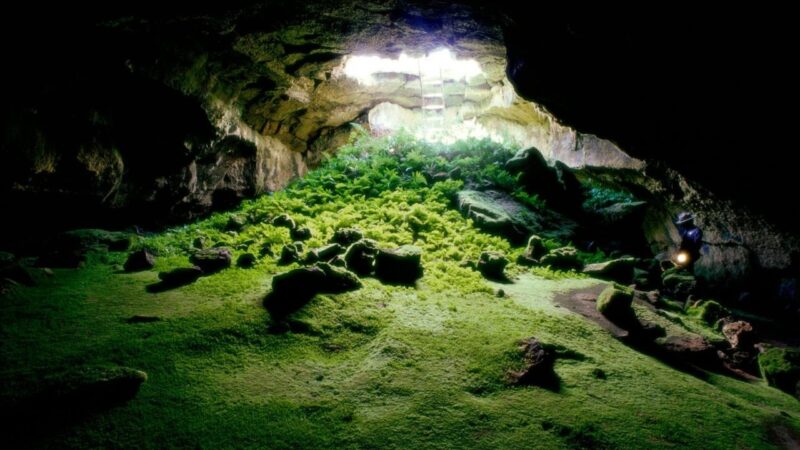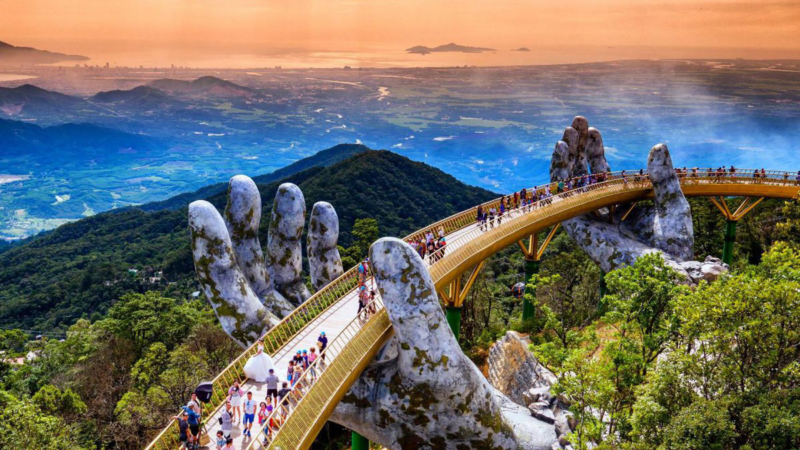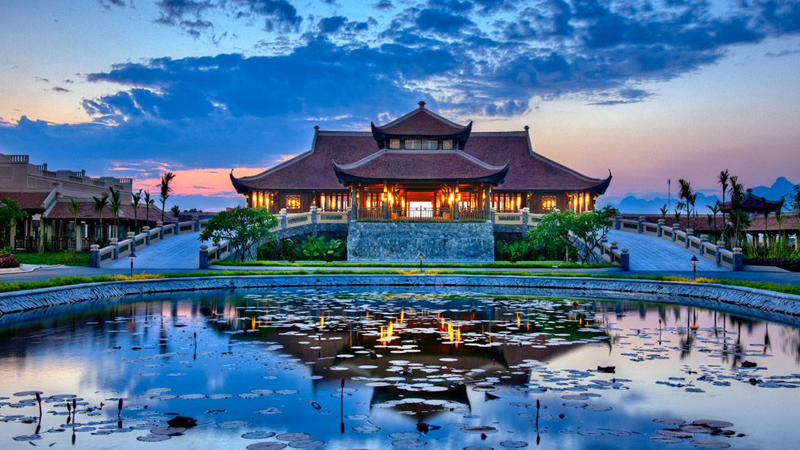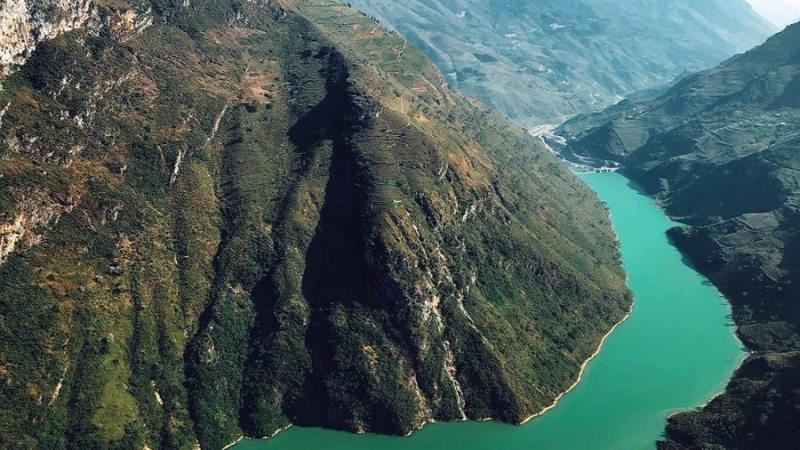First Time Traveling to Sapa – Travel Tips

Sapa – What Makes This Misty Northwestern Town Special? Discover a Complete A-to-Z Travel Guide for First-Time Visitors in This Article!
Introduction to Sapa Tourism – The Misty Town
Sapa, located in Lào Cai Province, is more than 300 kilometers northwest of Hanoi. Sapa has been a tourist destination since the early 1900s during the French colonial period, known as the misty town of the Northwest. It is famous for its numerous landmarks, scenic spots, and unique specialties that attract tourists, especially international visitors.

Weather and the Best Time to Visit Sapa
Sapa is a unique town, located in a temperate and subtropical climate zone, making the weather cool year-round. Particularly in winter, frost and snow can appear.
The average annual temperature in Sapa is 15-18 degrees Celsius. In the summer, temperatures range from about 20-23 degrees during the day and around 16 degrees at night. Sapa’s mild climate throughout the year makes it a favorite destination for tourists when planning their vacations and getaways.
What is the best time of year to visit Sapa? Sapa has cool weather all year round, so any time of the year is ideal for visiting.
- From May to August: Sapa experiences rain, which, though not significant, can somewhat affect your trip. Therefore, you might want to consider this when planning your visit to Sapa during this time.
- From September to November: If you want to immerse yourself in the rice harvest season in the highlands, visit Sapa in early autumn. For young travelers or photography enthusiasts, Sapa is one of the best places for cloud hunting as winter begins.
- From December to January of the following year: Sapa sees frost and snowfall during this time, so if you plan to travel in winter, be sure to prepare warm clothing to fully enjoy the snowy experience in Sapa.
How to Travel to Sapa from Hanoi
Currently, there are no direct flights to Sapa or Lào Cai, so travelers can only reach Sapa from Hanoi by road or rail.
1. Traveling to Sapa from Hanoi by Train
Many tourists choose to travel by train to avoid traffic jams and enjoy the scenery. There are several train companies operating the Hanoi – Sapa – Hanoi route, ranging from budget to luxury options. The train interiors are clean, modern, and regularly upgraded to meet the needs of those who enjoy taking “Instagram-worthy” photos. The travel time is about 8 hours and 30 minutes, with ticket prices ranging from approximately 23 USD to 29 USD for a one-way ticket, depending on the class of seat. If you choose a private cabin, ticket prices can increase by two or three times; however, you will have maximum privacy to enjoy the long journey.
Some reputable train companies from Hanoi to Sapa include:
- Vietnam Railways
- Sapaly Express Train
- Pumpkin Train
- Chapa Express Train
- Livitrans Express Train
- Oriental Express Train
Departure Point: Hanoi Railway Station – No. 1, Trần Quý Cáp Street, Hoàn Kiếm District, Hanoi.
2. Traveling to Sapa from Hanoi by Bus
Many team members choose to travel to Sapa from Hanoi by bus to save time (it only takes about 5 to 6 hours) and to experience the beautiful mountain roads firsthand. The cost ranges from approximately 17 USD to 21 USD for a round-trip ticket. It’s recommended to choose reputable bus companies like Green Lion, Inter Bus Lines, or Fansipan Express.
Getting Around and Sightseeing in Sapa
• Option 1: Rent a motorbike in Sapa for around 5 to 8 USD per bike, excluding fuel, to explore the sights on your own. Note that rental rates are based on a daily schedule (6:00 AM to 6:00 PM), so whether you rent in the morning or afternoon, the price is the same. You must return the bike by 6:00 PM, though it may be extended to 8:00 PM.
• Option 2: Arrange with a motorbike taxi driver to take you to several popular tourist spots. This usually costs about 4 to 6 USD for 4 to 5 nearby locations.
Must-Visit Landmarks When Traveling to Sapa
To ensure you don’t miss the opportunity to explore this beautiful mountain town, Haidangtravel has compiled a list of the most attractive destinations.
AREAS AROUND SAPA TOWN
Hàm Rồng Mountain
Standing on the peak of Hàm Rồng Mountain, you can enjoy a panoramic view of Sapa, Mường Hoa Valley, and Tả Phìn, all partially hidden in the mist. Climbing up Hàm Rồng, visitors feel as if they are lost in a fairy garden, with clouds enveloping their bodies and vibrant flowers covering the ground.
Location: Right in the center of Sapa town.
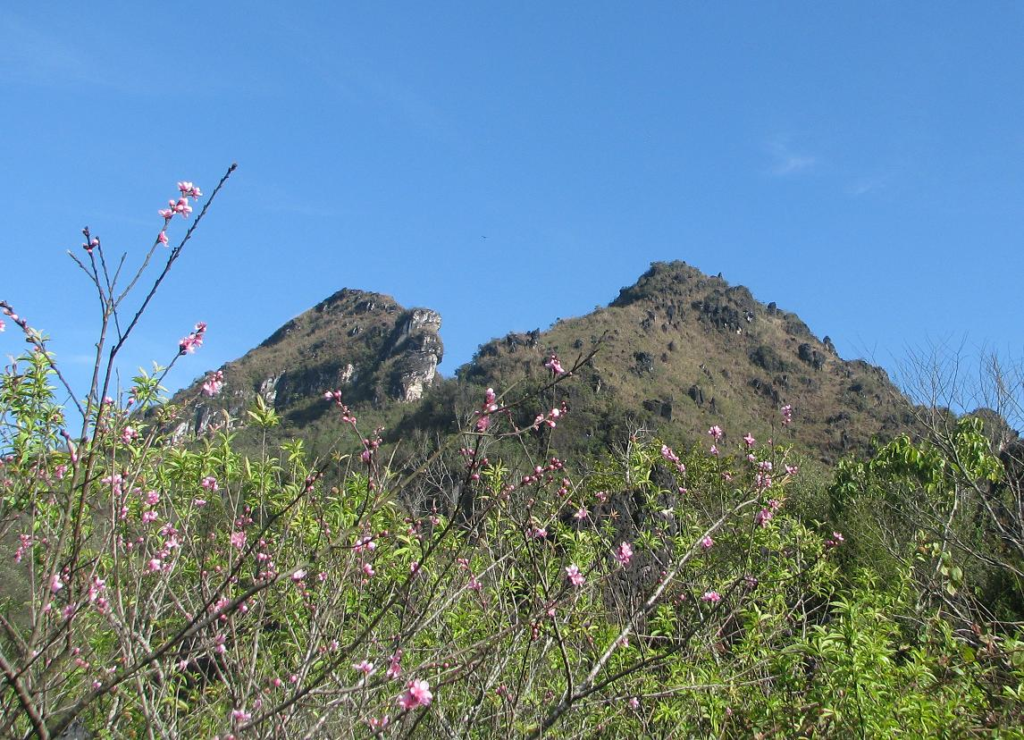
Sapa Stone Church
Built in 1895, Sapa Stone Church is considered one of the most complete ancient architectural landmarks left by the French. The church has been restored and preserved, becoming an iconic image when mentioning the misty town of Sapa.
Location: In the center of Sapa town.

Cát Cát Village
As an ancient village of the Hmong people, Cát Cát Village still preserves many traditional crafts such as cotton planting, flax cultivation, and weaving. Today, it has been developed into the Cát Cát tourist area.
Location: 2 kilometers from the center of Sapa town.

Tả Phìn Village
This village boasts beautiful natural scenery and a rich cultural heritage of the Red Dao people, known for their traditional brocade craft. When visiting Tả Phìn Village, you can also explore the nearby Tả Phìn Cave, which features fascinating stalactites in the shapes of dancing fairies, seated fairies, distant fields, and sparkling forests.

Tả Van
Following Highway 4D to the southeast, about 8 kilometers from Sapa town, you will reach Tả Van Giáy Village. Here, visitors have the opportunity to learn more about the lifestyle and customs of the Giáy people. The path to Tả Van Giáy Village is narrow, with dirt roads. On both sides of the road are fertile terraced fields, highlighted by the green of corn and young rice.

Sín Chải
Sín Chải Village, located in San Sả Hồ Commune, is about 4 kilometers from the center of Sapa town. This village remains largely untouched by tourism, preserving its original rustic charm. It is home to the Black Hmong people, with a population of around 1,400. Besides cultivating upland rice and hybrid corn, the residents of Sín Chải also grow cardamom on the gentle mountain slopes, providing a significant source of income in this ancient valley.

Mường Hoa Valley – Sapa Ancient Rock Field
A special feature of this valley is the ancient rock field, which contains carvings of various shapes, nestled among the vegetation and terraced fields of the local ethnic people. Hundreds of sandstone rocks are engraved with mysterious drawings and characters whose origins and meanings remain unknown. Today, this ancient carving site has been recognized as a national monument, representing a unique heritage of ancient Vietnamese people. Additionally, Mường Hoa Valley is home to a beautiful stream that stretches about 15 kilometers, passing through the communes of Lao Chải, Tả Van, Hầu Thào, and ending at Bản Hồ.
Location: Hầu Thào Commune, 8 kilometers southeast of Sapa town. From Sapa town, you can reach Mường Hoa Valley by crossing a pass along the high mountain range.


Fairy Cave Scenic Spot
Heading upstream on the Chảy River for about 6 kilometers from the center of Bảo Nhai Commune (Bắc Hà District), a boat will take you past the ancient Trung Đô citadel, steeped in legend. Here, the Chảy River narrows, forming a deep, gentle stream that winds between two steep cliffs. Fairy Cave Scenic Spot is like a miniature Hạ Long Bay, associated with the legend of the Ba Cô Temple in Bảo Nhai Commune. Many visitors come here to enjoy the scenery, bathe in the Fairy Stream, and immerse themselves in the morning light by the flower island, all while praying for blessings of beauty, health, and prosperity.
Location: 6 kilometers from the center of Bảo Nhai Commune (Bắc Hà District).
Conquering Fansipan – The Roof of Indochina
Fansipan is the highest mountain on the Indochina Peninsula, standing at 3,143 meters, located at the heart of the Hoàng Liên Sơn range. You can either join a tour organized by travel companies or arrange your own trip with the guidance of local Hmong or Dao people. On the way to the summit, you’ll have the chance to explore the fascinating flora and fauna. The mountain is home to many valuable medicinal plants, such as Hoàng Liên, as well as precious woods and wildlife like pheasants, bears, monkeys, antelopes, and various bird species.
Alternatively, you can choose to take the cable car. The Fansipan cable car, which began operation in early 2016, has allowed tens of thousands of visitors to reach the summit of Fansipan, marvel at, and conquer the highest peak in Indochina. This cable car line has been certified by Guinness World Records with two records: the world’s greatest elevation difference between the departure and arrival stations (1,410 meters) and the world’s longest three-rope cable car system (6,292.5 meters). The time to reach the summit has now been shortened from 2 days to just 15 minutes.
Location: 9 kilometers southwest of Sapa town.
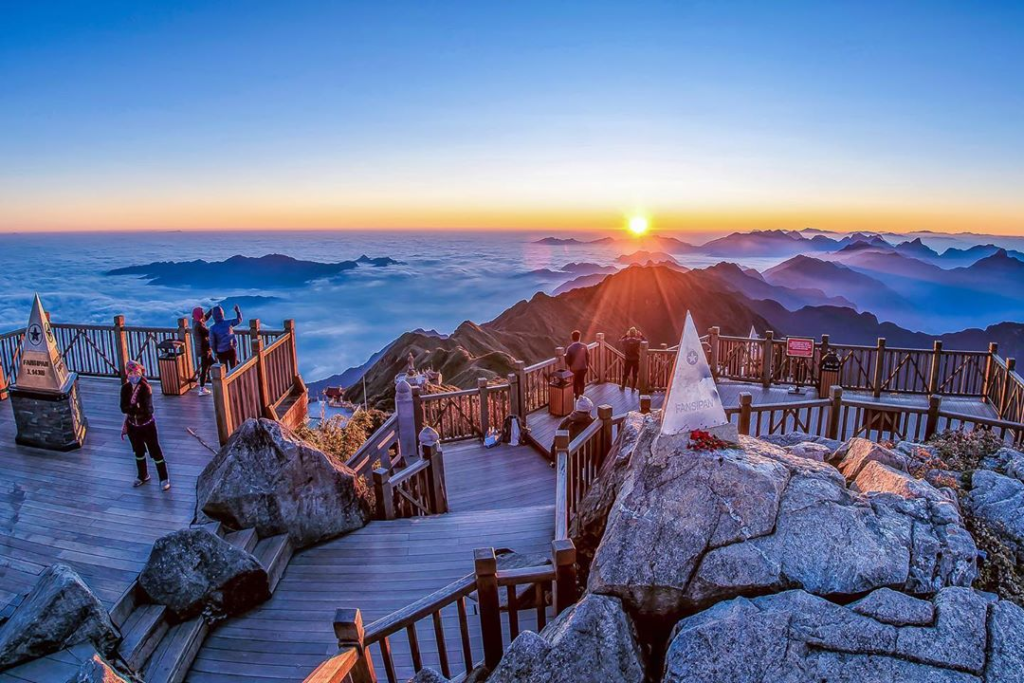
Silver Waterfall – Love Waterfall
From Sapa town, head west about 11 kilometers on the road to Lai Châu, and you’ll encounter Silver Waterfall, cascading down from a height of over 100 meters into the stream below in the Ô Quy Hồ Valley, creating an impressive sound of the mountains and forests. However, during the dry season, you might want to reconsider visiting Silver Waterfall as the water flow is much lower. Continue 3 more kilometers from Silver Waterfall to reach Heaven’s Gate, where you can view the Lai Châu Valley and the majestic Fansipan peak. If you enjoy hiking, you can stop at Trạm Tôn and trek through the Hoàng Liên National Park for about 1 kilometer to discover Love Waterfall.
Location: About 12 kilometers west of Sapa town, on the road to Lai Châu.

Heaven’s Gate
The road to Heaven’s Gate winds its way through the winding and towering mountains. This mountain pass, known as Trạm Tôn, weaves through the majestic Hoàng Liên Sơn range. Heaven’s Gate is the peak of this pass. Standing at Heaven’s Gate in Sapa, you can gaze out and admire the breathtaking panoramic views.



